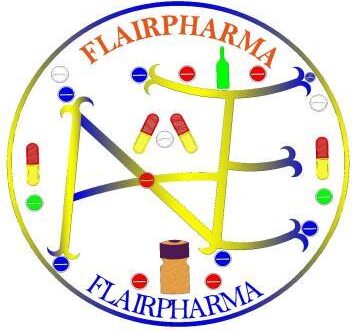Definition:
Design Qualification (DQ) is a documented verification process that ensures the proposed design of facilities, systems, or equipment is suitable for the intended purpose, meets all user requirements, and complies with regulatory expectations (e.g., cGMP, FDA, EU-GMP, ISO).
DQ confirms that the design outputs (drawings, layouts, specifications) align with the defined user and quality requirements before any physical installation takes place.
Types of Design Qualification:
While DQ is often treated as a single process, it may involve several types or scopes depending on the nature of the project:

Key Elements of Design Qualification:
DQ involves a series of documented steps, typically including:

Applications of DQ in Pharmaceuticals:
DQ plays a critical role across pharmaceutical operations:
Cleanroom Construction: Verifies HVAC zoning, pressure gradients, contamination controls.
Sterile Manufacturing: Ensures autoclaves, isolators, and RABS meet sterility requirements.
API Production Units: Validates reactor design, material compatibility, and control logic.
Utility Systems: Confirms water systems, HVAC, and compressed air meet GMP standards.
Laboratory Equipment: Ensures balance enclosures, hoods, and software are suitable and safe.
Benefits of Performing Design Qualification:

Stakeholders Involved
Multiple departments collaborate during the DQ process:
| Department | Role in DQ |
|---|---|
| Engineering | Creates and reviews technical design documents |
| Quality Assurance | Reviews GMP and compliance aspects |
| Validation Team | Ensures traceability and risk management |
| Production/Users | Verifies operability and workflow compatibility |
| Regulatory Affairs | Ensures adherence to applicable international guidelines |
Relationship with Other Qualification Phases
Design Qualification (DQ):Verifies design against URS, GMP, and risk principles
Timing : Before construction.
Installation Qualification (IQ):Confirms installation aligns with design.
Timing :After DQ.
Operational Qualification (OQ):Tests systems operate within specified parameters.
Timing : After IQ.
Performance Qualification (PQ):Demonstrates consistent system performance under load.
Timing : After OQ, in live process.
Common Challenges in DQ:

Best Practices for Effective DQ
- Involve multidisciplinary teams from day one
- Use a traceability matrix for full URS coverage
- Conduct thorough risk assessments on all design choices
- Ensure all documents are version-controlled and reviewed
- Maintain alignment with future IQ/OQ/PQ stages
Frequently asked questions (FAQ):
How to write a design qualification (DQ)?
Imagine DQ as a bridge between vision and validation. Begin with a User Requirement Specification (URS), then build a Design Review section, add a Traceability Matrix, wrap it with Risk Assessments, and seal it with approvals from QA, validation, and engineering teams. Always align it with regulatory norms like GMP or ISO.
What is URS, DQ, IQ, OQ, PQ?
Think of it like a novel:
- URS (User Requirement Specification) – The story’s plot.
- DQ (Design Qualification) – The blueprint before writing.
- IQ (Installation Qualification) – The setup of the book’s world.
- OQ (Operational Qualification) – Does the story flow logically?
- PQ (Performance Qualification) – Reader reviews: does it hold up in real-world use.
What qualifications does a design engineer need?
A design engineer often starts with a Bachelor’s in Mechanical, Civil, or Electrical Engineering, combined with proficiency in CAD tools, a knack for problem-solving, and familiarity with industry regulations.
How to design a qualification?
Designing a qualification is like crafting a recipe:
- Identify the learning outcome.
- Define the skills and knowledge areas.
- Establish assessment criteria.
- Set prerequisites and levels (e.g., beginner, advanced).
- Align with industry or educational standards.
What is the scope of design qualification?
DQ stretches from pharmaceutical systems, equipment, and cleanrooms to utilities and even software. Its goal? To ensure all designs can deliver what users need — safely, efficiently, and compliantly.
What is a DQ qualification?
It’s not a college degree — it’s a GMP-mandated validation step. A “DQ qualification” ensures the design specs match the user requirements and regulatory expectations before construction or procurement begins.
What is PPQ in pharma?
PPQ (Process Performance Qualification) is the final act in validation. It proves the process performs consistently and reliably, using data from full-scale production .
What are 4 different types of qualification?
- Academic Qualification – Degrees and diplomas.
- Professional Qualification – Industry-recognized certifications.
- Vocational Qualification – Trade-specific practical skills.
- Regulatory Qualification – Compliance with laws (like DQ in pharma).
What is the purpose of design qualification?
It’s a preventive quality assurance tool. DQ ensures that before we build or install anything, it’s already proven — on paper — to be fit-for-purpose and regulation-ready.
What is OQ and PQ?
- OQ (Operational Qualification): Confirms systems operate within desired limits under test conditions.
- PQ (Performance Qualification): Validates performance during real-world operations with actual materials.
What is the design qualification phase?
It’s the first formal stage of qualification. Before installation or commissioning, DQ ensures plans, blueprints, and specs align with what’s needed and what’s compliant.
What is the purpose of validation in pharma?
Bonus answer! Validation proves that systems and processes do what they say — consistently, reproducibly, and safely. It’s pharma’s version of a quality guarantee.
What happens if you discover during OQ that the equipment design cannot meet GMP temperature mapping standards?
This often traces back to a gap in Design Qualification. A poorly executed DQ may have failed to identify that the design couldn’t maintain uniform conditions, leading to costly redesign or retrofitting during OQ—a classic case of “pay now or pay more later.”
How can a DQ reveal misalignments between vendor design and regulatory requirements?
By performing a gap analysis between the vendor’s proposed design and internal URS, a team can identify where the equipment or system falls short—such as missing alarms, inadequate data integrity controls, or poor cleanability—allowing for design modifications before purchase.
Why is risk assessment important during Design Qualification?
Risk assessment during DQ helps prioritize critical design elements that directly impact product quality, patient safety, or data integrity. It ensures focused reviews and reduces the chance of overlooking high-risk gaps, especially in complex or computerized systems.

